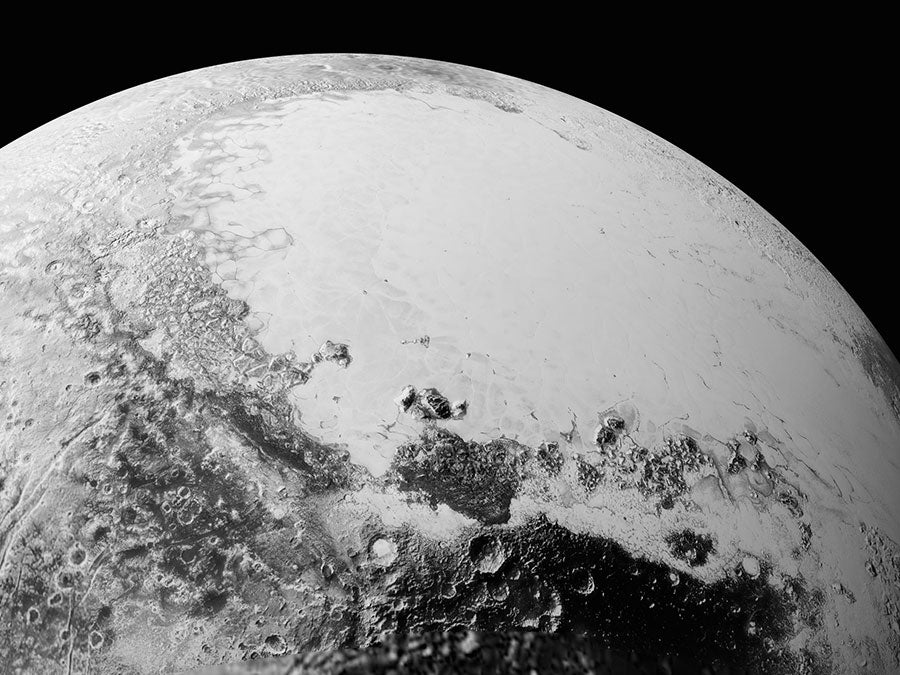Pluto's landscape is so complex that Nasa scientists aren't sure how it got there, after New Horizons images could show huge field of dunes
How the dunes, craters and huge mountains on the dwarf planet could have been formed is 'a head-scratcher', say scientists

The surface of Pluto is so complex that scientists aren’t sure how it got there, they have said, after images beamed back from New Horizons show an incredibly complex landscape.
The pictures show that the dwarf planet might have huge fields of dunes, massive nitrogen ice flows and valleys that could have formed as materials flowed over its surface. The complexity has stunned scientists —they shouldn’t be there, since the atmosphere is so thin.
“Pluto is showing us a diversity of landforms and complexity of processes that rival anything we’ve seen in the solar system,” New Horizons Principal Investigator Alan Stern said in a statement. “If an artist had painted this Pluto before our flyby, I probably would have called it over the top — but that’s what is actually there.”
Now scientists are trying to work out what happened to get the stunning range of complexity of features onto Pluto.
“Seeing dunes on Pluto -- if that is what they are -- would be completely wild, because Pluto’s atmosphere today is so thin,” William B. McKinnon, part of New Horizons’ Geology, Geophysics and Imaging team said in a statement. “Either Pluto had a thicker atmosphere in the past, or some process we haven’t figured out is at work. It’s a head-scratcher.”
Scientists have also been surprised to find that the haze in Pluto’s atmosphere has more layers than they knew. That creates a kind of twilight effect, meaning that terrain is lit up at sunset and gives them a kind of visibility that they’d never expected.
Last weekend, New Horizons started sending images back to Earth after its flyby in July — a process that will take a year, in all. The new pictures have enabled the New Horizons team to see Pluto in much detail than before, giving resolutions as high as 400 meters per pixel.
In pictures: Nasa mission to Pluto
Show all 5Subscribe to Independent Premium to bookmark this article
Want to bookmark your favourite articles and stories to read or reference later? Start your Independent Premium subscription today.

Join our commenting forum
Join thought-provoking conversations, follow other Independent readers and see their replies